Michael Küffmeier






Synthetic polarization maps around embedded protostars
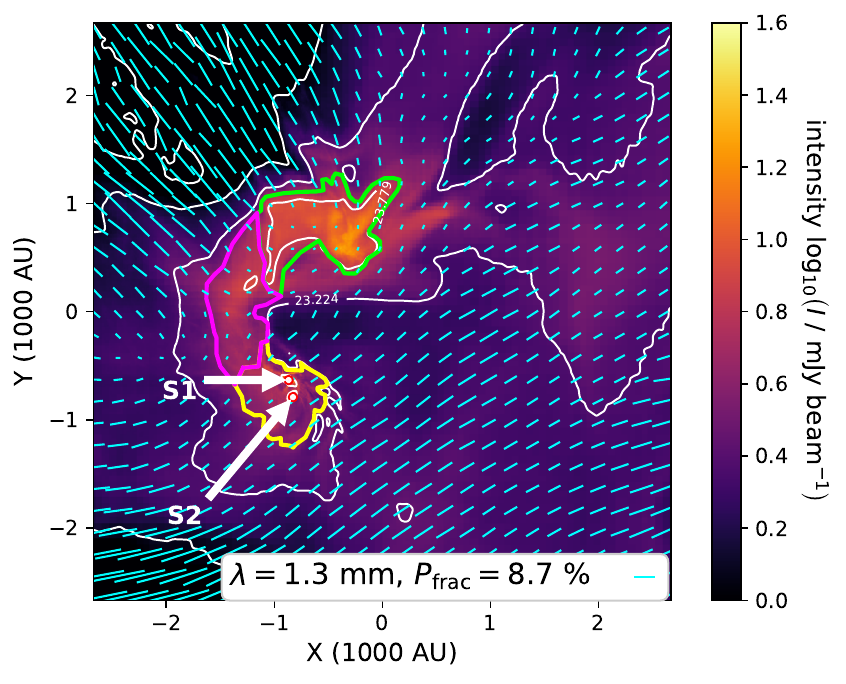
Co-supervisor: Zhi-Yun Li
Student: Hannah Woodward
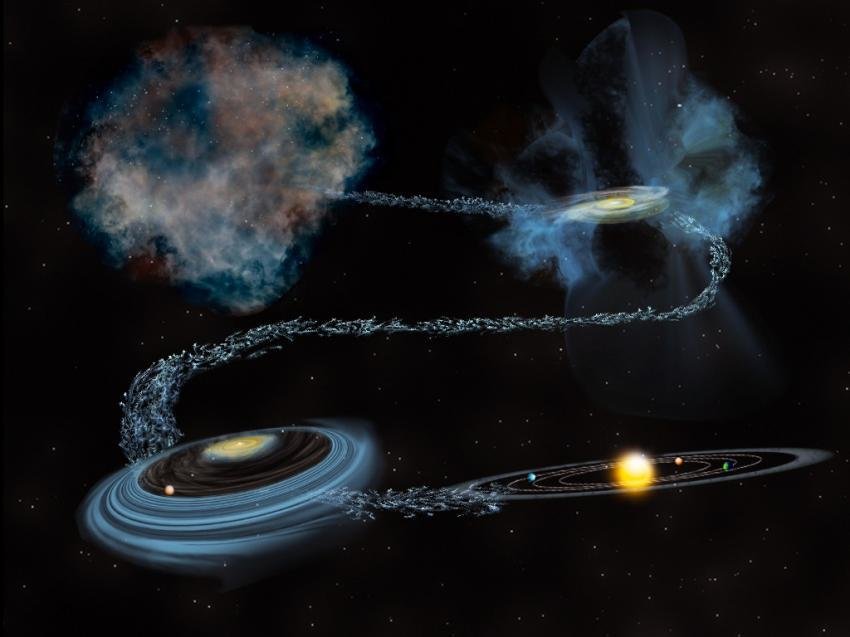
Credit: B. Saxton
Stars are born in large assemblies of gas
Star-disk systems form in different environments provided by Giant Molecular Clouds (Size: 10 - 100 pc)
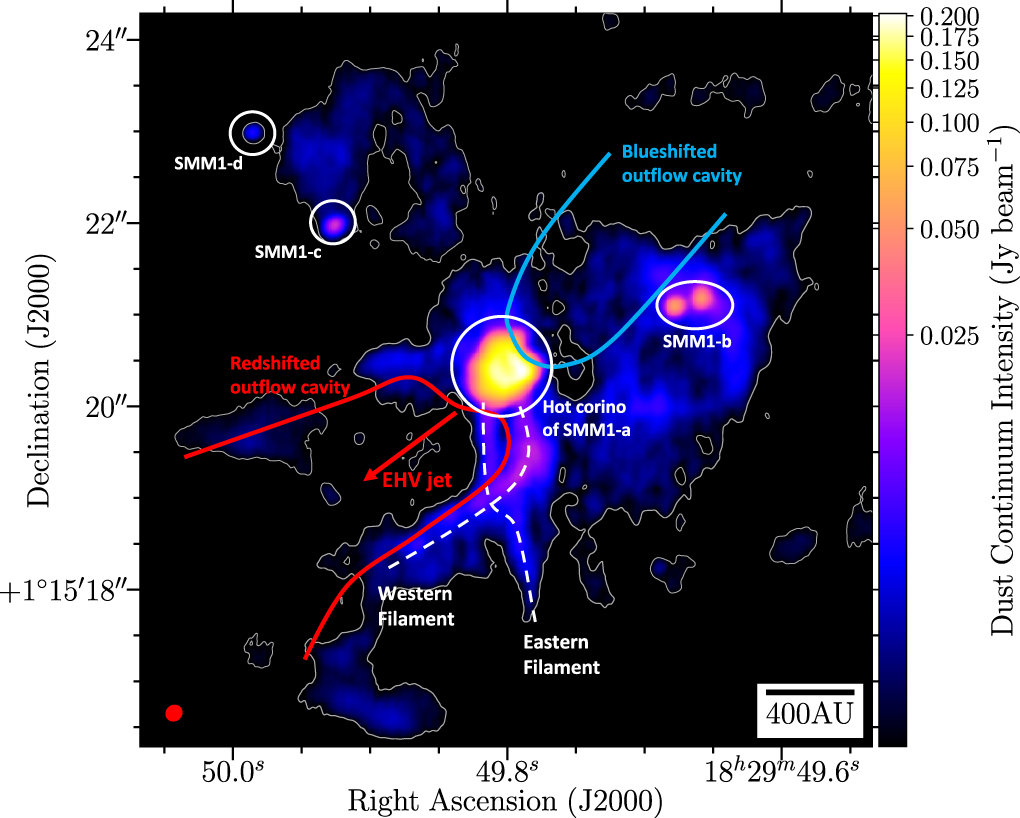
Serpens SMM1 (Le Gouellec et al. 2019)
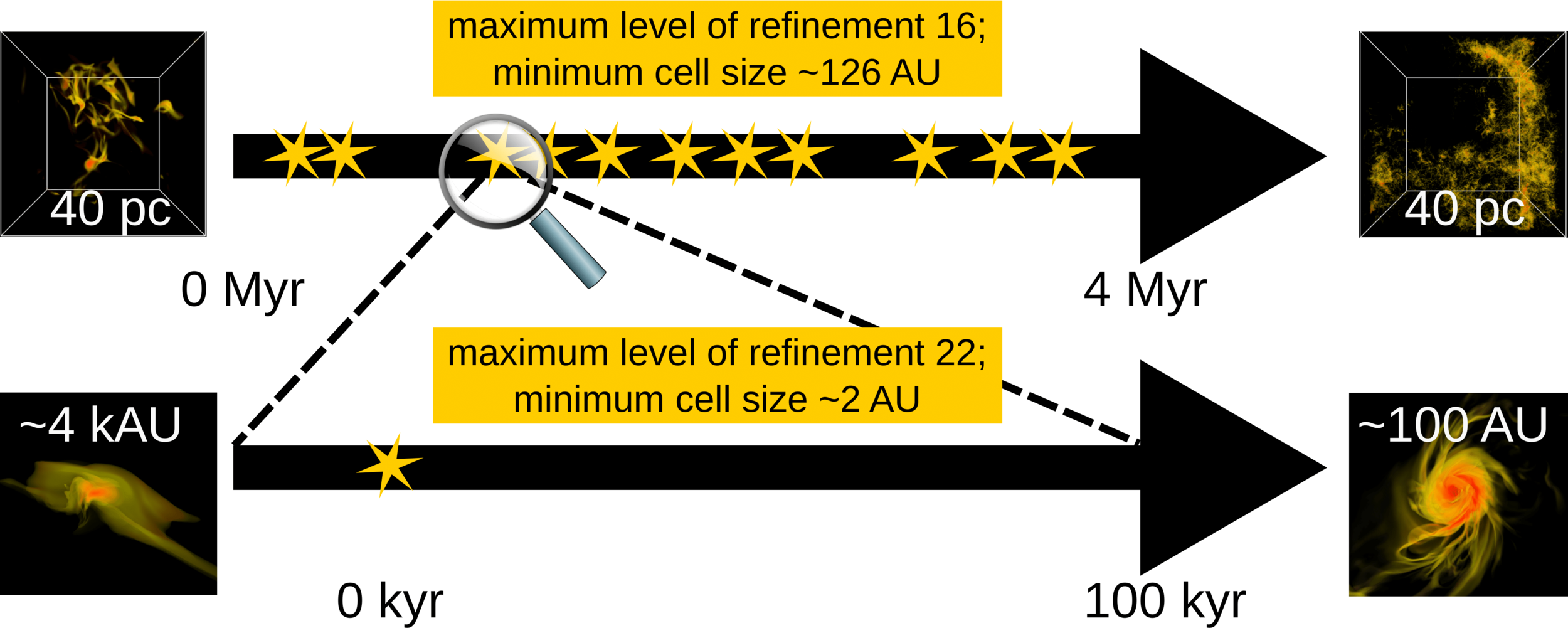
Zoom-in method
Küffmeier et al. 2017
- adaptive mesh refinement
- ideal magnetohydrodynamics
- turbulence driven by supernovae
- stars modelled as sink particles

Zoom-in on embedded protostellar multiple

Küffmeier, Calcutt
& Kristensen 2019
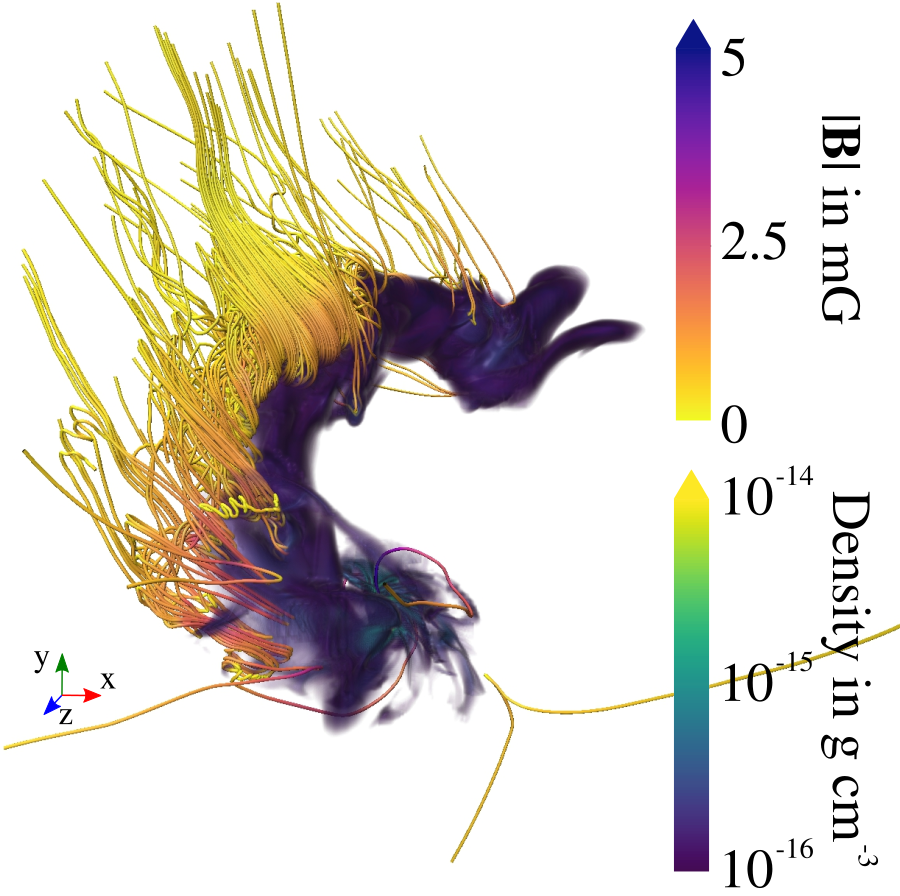
Küffmeier, Reißl et al. 2020
bridge structure similar to IRAS 16293--2422 (e.g. Sadavoy+ 2018, van der Wiel+ 2019, Maureira+ 2020)
~1500 AU
Zoom-in simulations
Start from a snapshot of a young Giant Molecular Cloud (GMC)
Model stars as sink particles
Turbulence as a result of supernova feedback
Adaptive mesh refinement (AMR)
ideal Magnetohydrodynamics (MHD)
Magnetic fields in simulation
Küffmeier, Reißl et al. 2020
...in bridge

Field strength in bridge:
about 1 to 2 mG

...around primary protostar
Field strength close to foot point:
>100 mG
Dust polarization to measure magnetic fields
Polarization depends on degree of grain alignment and elongation
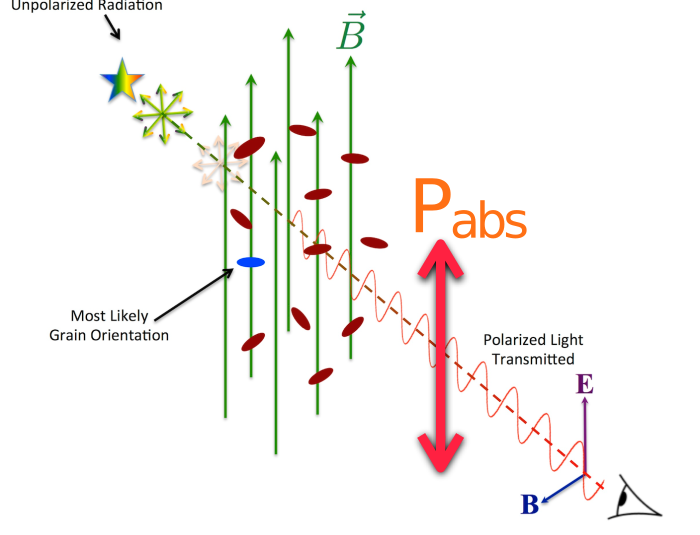
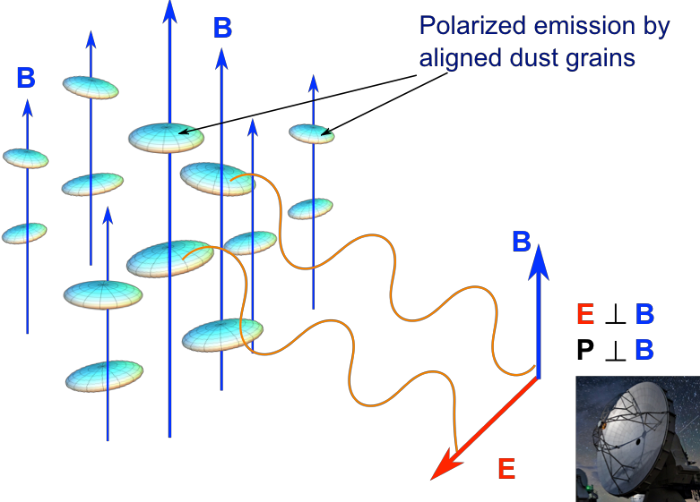
Credit: B. G. Anderson
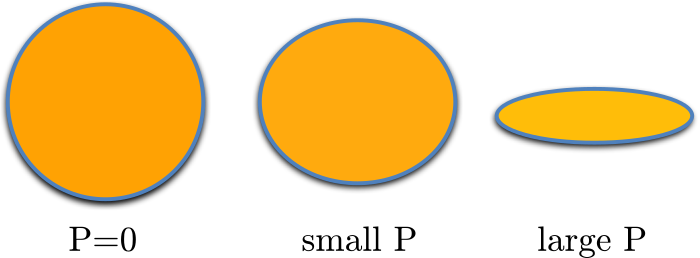
Measuring linear polarization of dust grains allows to determine magnetic field orientation ...
... if alignment mechanism is known!
Stokes vector: description of polarized light
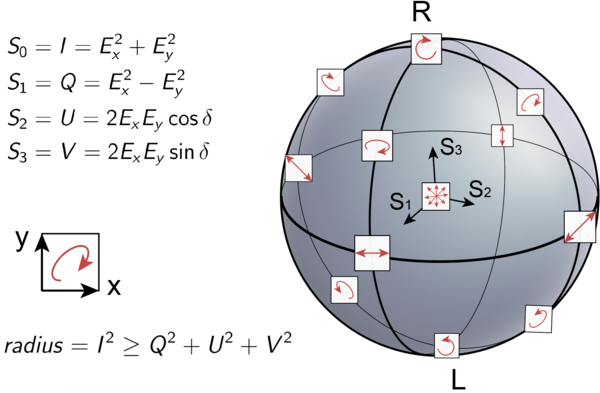
Poincaré sphere; credit: wikipedia
Synthetic observation with POLARIS
Küffmeier, Reißl et al. 2020
Emitted radiation

at 1.3 mm: polarization traces magnetic field structure

Synthetic dust polarization maps at 1.3 mm
Küffmeier, Reißl et al. 2020

Emitted radiation
Polarization fraction in bridge:
a few %
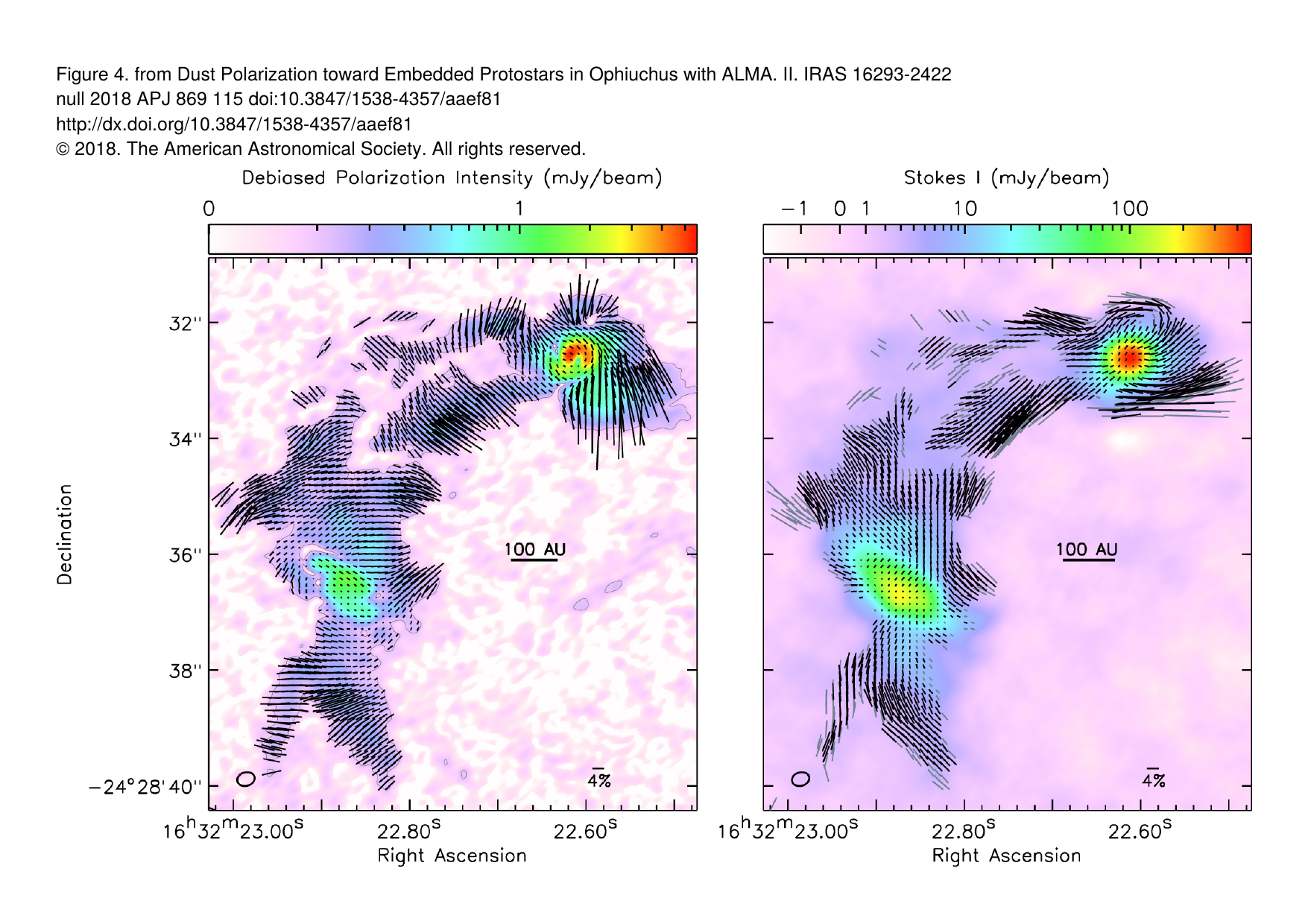
Polarization fraction in bridge:
up to 20 %
IRAS 16293--2422
Sadavoy et al. 2018
alignment efficiency higher than efficiency produced by standard RAT alignment
(also Le Goeullec+20)
Wavelength dependence: 1.3 mm vs 53 micron

Emitted radiation
1.3 mm: good tracer of magnetic field
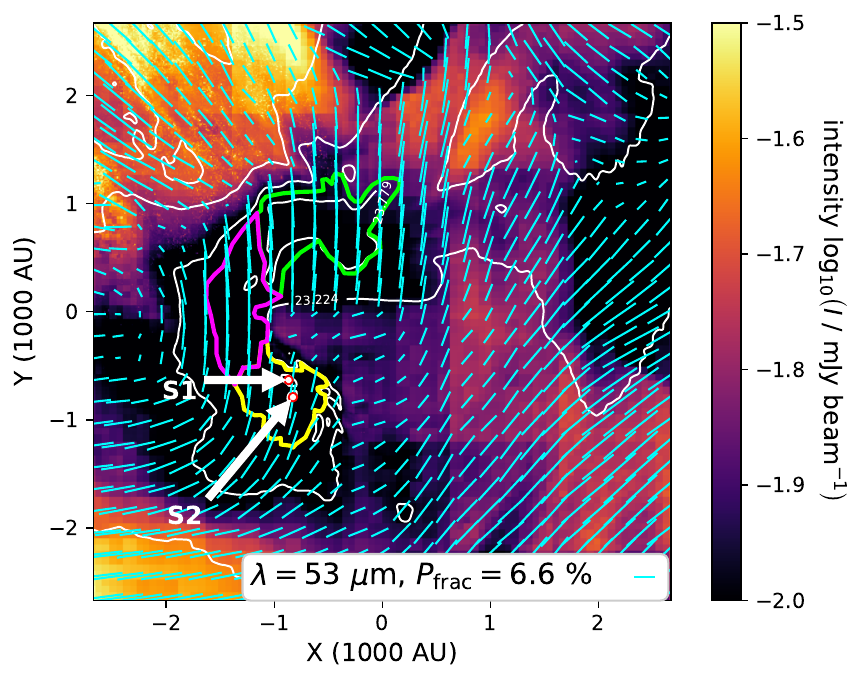
53 micron: poor tracer of magnetic field
Küffmeier, Reißl et al. 2020
Two reasons for wavelength dependence
Küffmeier, Reißl et al. 2020
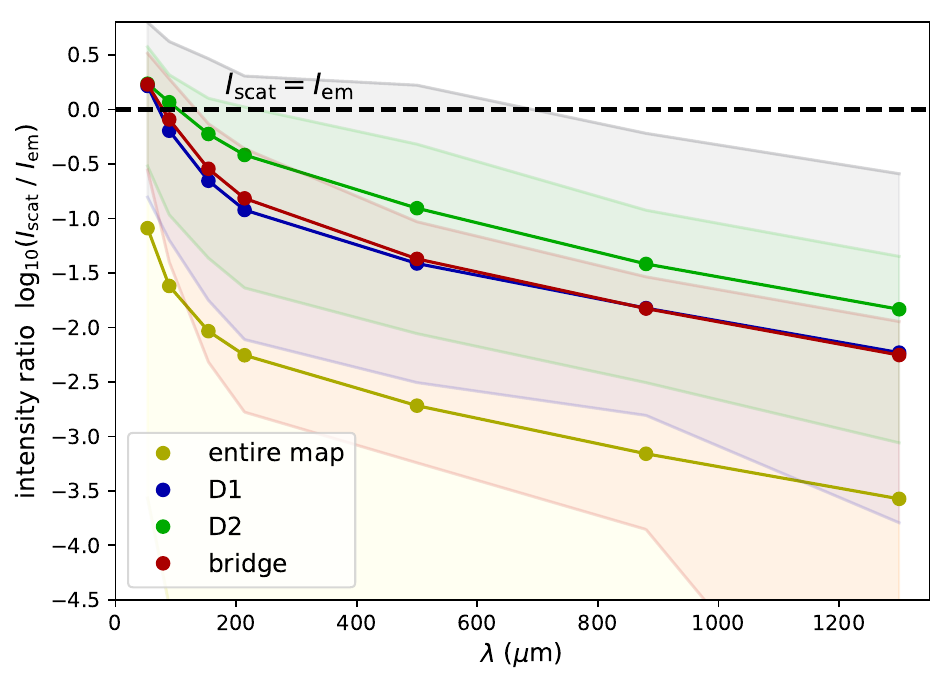
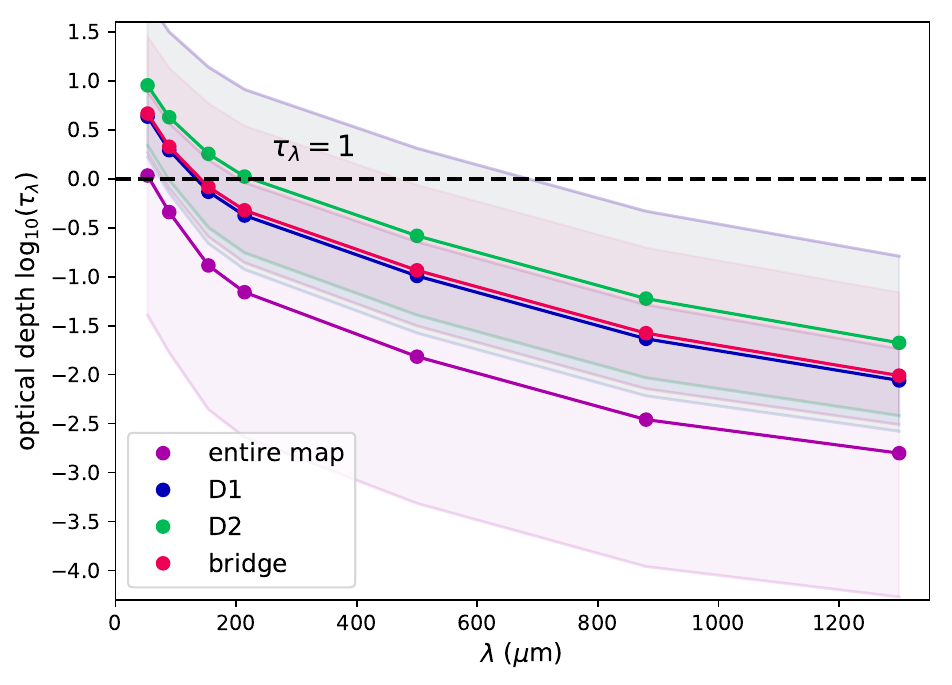
Self-scattering
Dichroic extinction
Take-away for scales beyond >100 au
< 200 micron: dichroic extinction and self-scattering; no trace of B
> 200 micron: thermal emission; linear polarization traces B
Conclusion and outlook
Linear polarization of dust reemission at wavelength >200 micron is good tracer of magnetic field structure on scales >100 au

Goal: statistical comparison of synthetic polarization maps with observations (summer project of UVa student Hannah Woodward)

Credit: Pelkonen et al. 2021
Disk size distribution
Alternative/additional effect to external photoevaporation:
Disks are born small in star-forming regions with high ionization

Tobin+ 2019
magnetohydrodynamics
ideal MHD
Ohmic dissipation
Hall
ambipolar diffusion
Non-ideal
Resistivity depends on ionization rate
Küffmeier, Zhao & Caselli 2020

Question: What is the effect on disk formation when differing the (cosmic-ray) ionization rate?
In fact, we use a 2D setup (r- and z-coordinate)
Parameter study
Küffmeier, Zhao & Caselli 2020
Effect of ionization on disk size
increasing ionization rate
enhanced magnetic braking
smaller disks
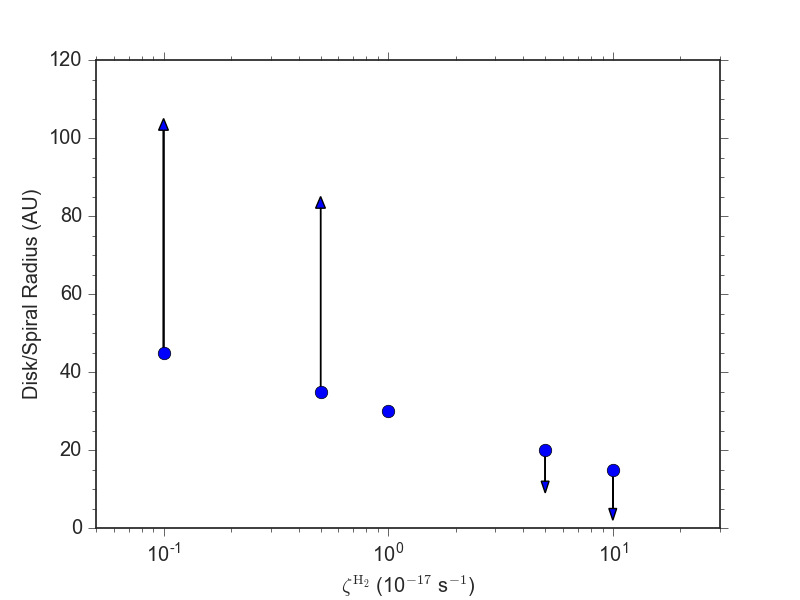
Küffmeier, Zhao & Caselli 2020
Are disks already born small in some regions?
because of higher (cosmic-ray) ionization rates??